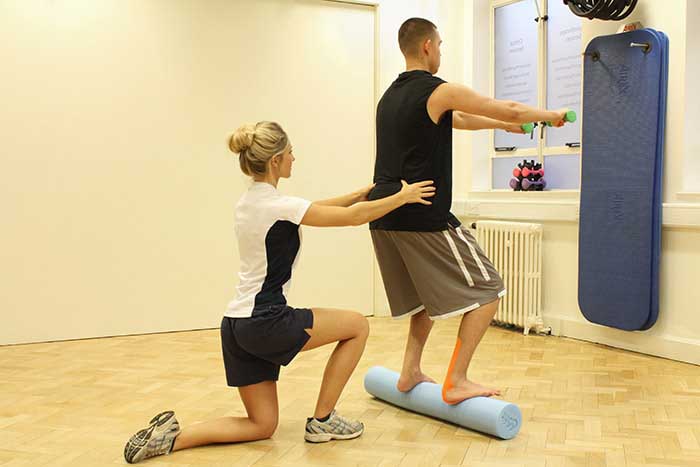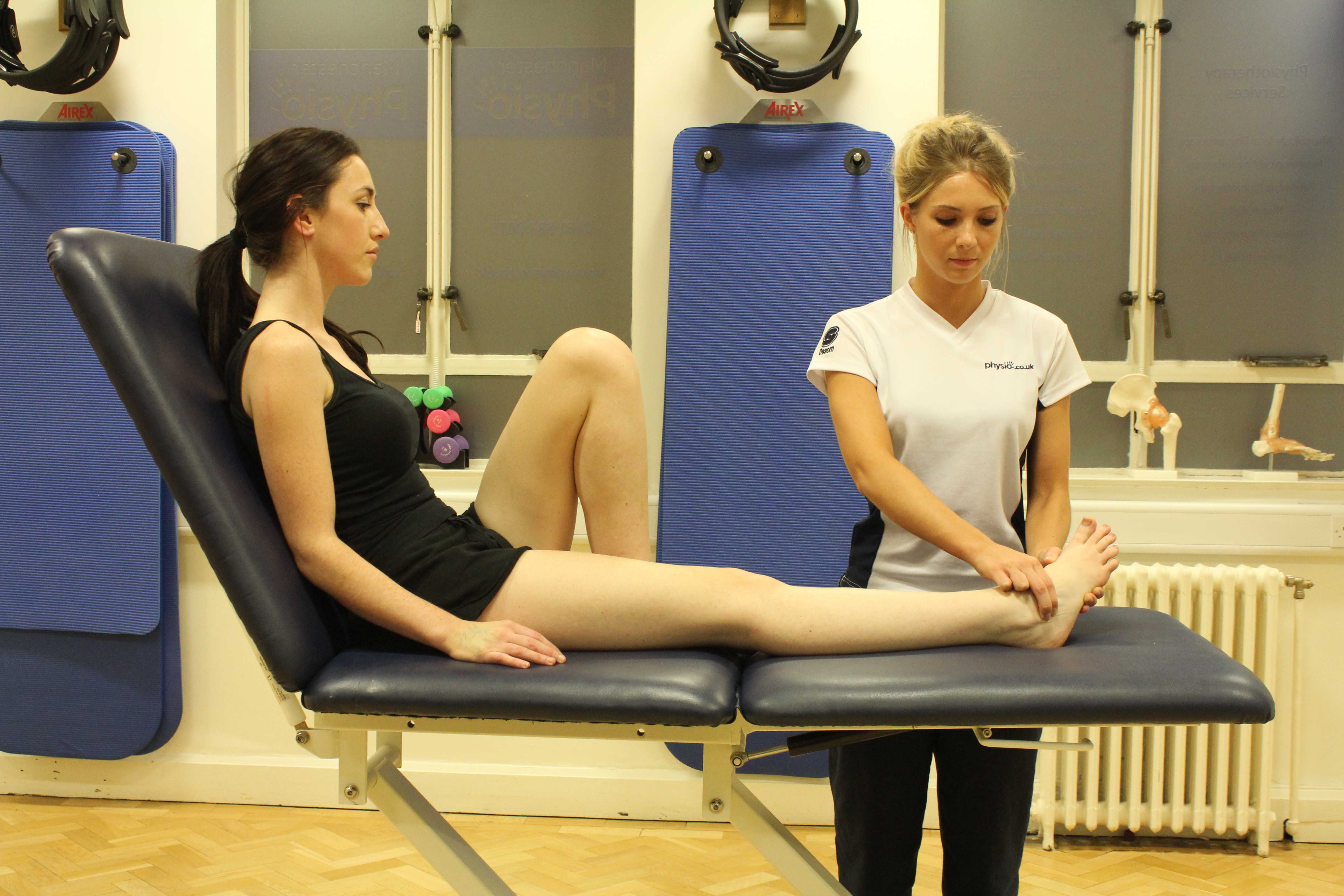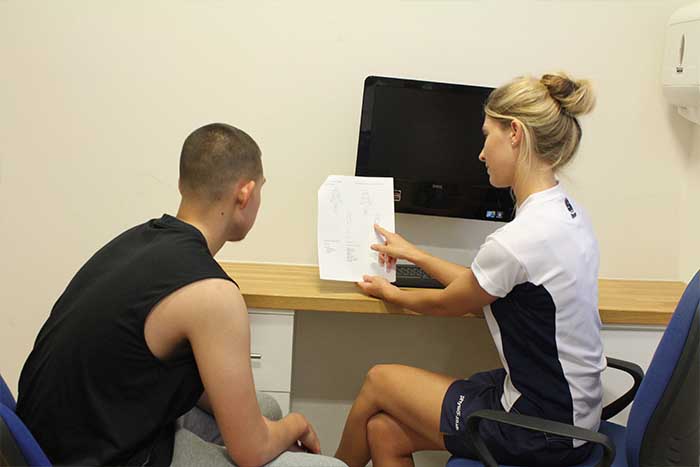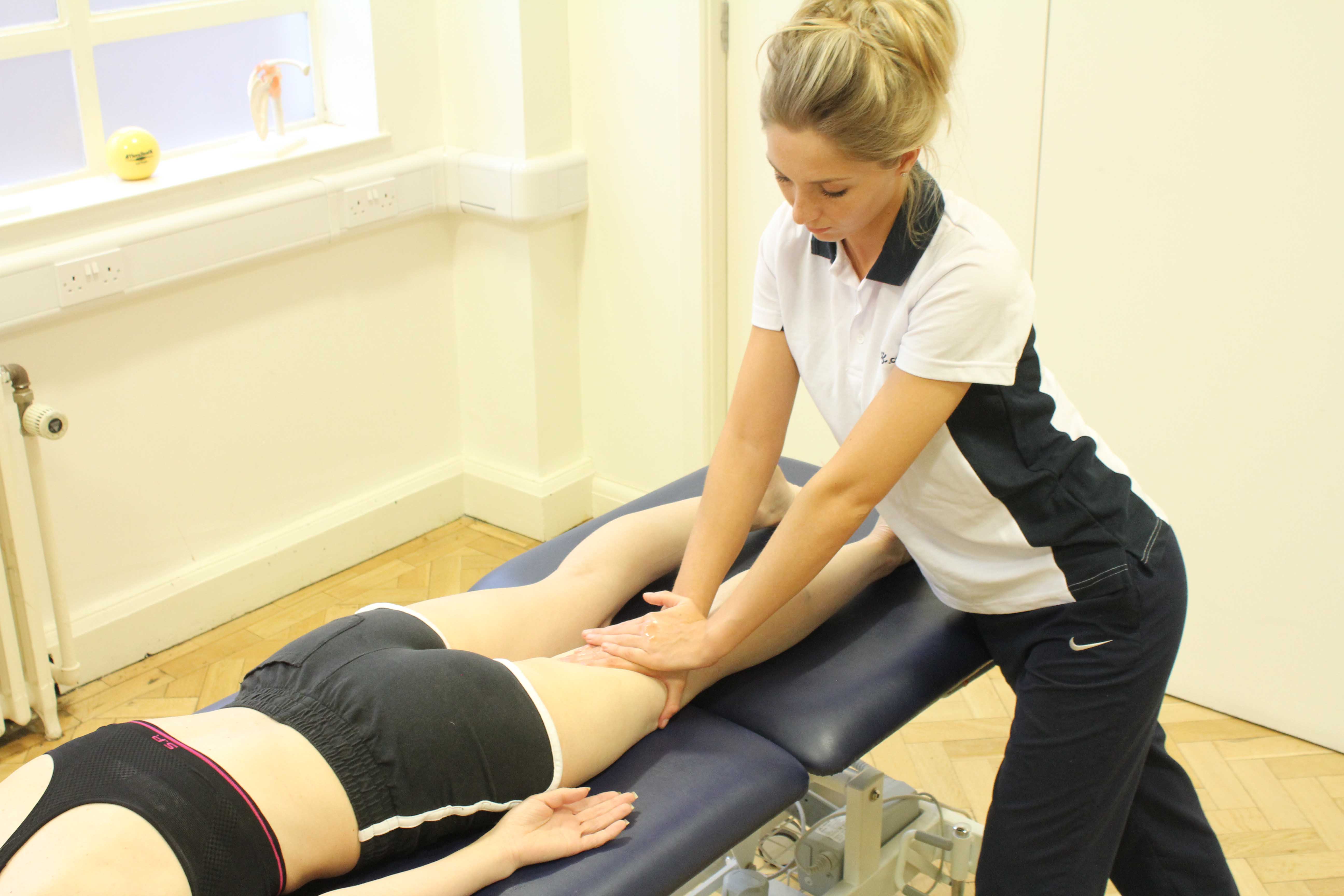A massage is an effective and beneficial treatment used to help as part of a training programme. A variety of different people can be a part of a training programme for a range of reasons. Some common reasons people use training programmes include to increase fitness, for weight loss and to prepare for an event. A training programme can regularly become intense often increasing the chances of overworking muscles, building muscle tightness and increasing chances of injury. Our massage therapists at Physio.co.uk use massage as part of a training programme to help reduce muscle tension, improve muscle condition and prevent injury.
What type of massage is used as part of a training programme?
A variety of massage types can be used as part of a training programme. The massage types most often used include:

When can massage help as part of a training programme?
When a massage is used as part of a training programme, it can help in a variety of ways. The most common ways a massage can help include:
 Above: Friction massage of calcaneofibular ligament as part of training programme
Above: Friction massage of calcaneofibular ligament as part of training programmeTight muscles are relieved through massage. During a training programme, an increase in muscle tightness often occurs. Muscle tightness can be caused by the overuse of muscles or insufficient warm up or cool down. Tight muscles can make injuries such as muscle pulls and tears more likely to happen during activity and can affect performance. A massage helps to reduce muscle tightness by improving muscle elasticity. Muscle elasticity improves as temperature increases due to an increase in blood flow. Improving muscle elasticity increases range of movement of a muscle as well as allowing muscle relaxation. Increasing range of movement and relaxation of a muscle reduces muscle tightness and therefore reduces chances of injury and improves performance.
A massage used as part of a training programme can help reduce stress. A person can take part in a training programme for various reasons including preparing for an event or increasing fitness levels. Stress can often increase during a training programme. If a person is not achieving their desired goals as quickly as expected or feel they are not ready for an event, these factors can increase stress. Stress increases when a negative hormone called cortisol is released. Cortisol is the main hormone that causes stress but can also increase feelings of anxiety or depression. When a person is stressed, their performance is more likely to be poor which commonly further increases stress levels. A massage aims to reduce stress by replacing negative hormones with positive hormones. A massage stimulates the release of positive hormones called endorphins, serotonin and dopamine. Positive hormones are responsible for increasing relaxation, providing a feeling of happiness and a sense of well-being and increasing motivation. As blood flow increases around the body, the level of positive hormones also increases whilst levels of negative hormones decrease. Increasing positive hormones reduces stress and feelings of anxiety and depression helping to increase motivation and enthusiasm.
Relaxation is increased through massage as part of a training programme. Relaxation can be increased both physically and mentally during a massage. If physical and mental relaxation is poor during a training programme, a person is more likely to have increased anxiety levels and increased chances of injury. Physical relaxation occurs by the reduction in muscle tightness and tension. Muscle tightness and tension is caused by overuse of a muscle that has been worked on hard within a training programme. Muscle tightness and tension causes a restriction in movement and an increase in pain. A massage reduces muscle tightness and tension by increasing muscle temperature in order to improve tissue elasticity and flexibility. Reducing muscle tightness and tension decreases restriction and chances of injury whilst improving physical relaxation. Relaxation is improved mentally by the release of feel good hormones. Feel good hormones include endorphins, serotonin and dopamine. Feel good hormones give a person a sense of well-being whilst also reducing stress and anxiety. Reducing stress and anxiety helps to improve relaxation mentally.
A massage can help prepare a person for an event. Before an event, muscles tend to be tight and restrictive. Tight and restrictive muscles reduce performance and can result in injuries occurring within the event. If a person becomes injured, they are less likely to be able to return to training after the event, increasing levels of stress and anxiety. A massage helps to prepare a person for an event by reducing muscle tightness and increasing blood flow. A reduction in muscle tightness occurs as tissue inelasticity decreases. Friction created between the skin and fingers encourages blood flow to increase allowing inelasticity of tissues to reduce through an increase in temperature. Increasing blood flow also provides muscles with an increase in oxygen and nutrients. Oxygen and nutrients are used as an energy source and prevent muscles from fatiguing during the event. Preventing muscles from fatiguing and reducing muscle tightness help to prevent injury and improve performance.

What are the physiological effects of receiving a massage as part of a training programme?
There are a range of physiological effects that can arise during a massage used as part of a training programme. The most common physiological effects that occur include:
 Above: Deep tissue massage of bicep femoris as part of sports training programme
Above: Deep tissue massage of bicep femoris as part of sports training programmeThe removal of waste products is a physiological effect that can occur during a massage. Waste products build-up within muscles and can cause swelling, muscle fatigue, muscle weakness and muscular ache. A buildup of waste products is very common in people participating in a training programme. A massage removes waste products from the body through the stimulation of the lymphatic system. Stimulating the lymphatic system increases lymph flow. Increasing lymph flow, increases the amount of waste products picked up and transported around the body. A massage will help to push the waste products towards different glands in the body where they will then be removed. Removal of waste products decreases swelling, fatigue, weakness and muscular ache, helping to increase performance and decrease pain.
A massage used as part of a training programme can increase oxygenation. Oxygen has many uses within the body. The uses of oxygen that are most suitable when taking part in a training programme include an energy source and the maintenance of healthy muscles. Increased oxygenation occurs when blood flow increases due to oxygen being transported around the body within the blood. Blood flow increases as a massage encourages vasodilation and capillarisation. Vasodilation is the widening of blood vessels that allows an increase of blood flow to be transported through them. Capillarisation is where an increase in the quantity of capillaries surrounds a muscle to increase the availability of blood flow. When blood flow increases, the availability of oxygen rises, providing muscles with an increase in energy whilst also preventing injury from occurring.
An increase in tissue elasticity occurs during a massage. Tissue elasticity explains the ability of a muscle to reach its full length whilst stretching. Poor tissue elasticity regularly occurs during a training programme due to the high intensity of training and high work load put onto a muscle. When tissue elasticity is poor, movement is restricted, reducing a person's ability to perform to their best ability. A massage helps to increase tissue elasticity by increasing the temperature of elastic fibres. Elastic fibres are what give a muscle its elasticity. Temperature of elastic fibres increases as friction created between the skin and fingers encourages an increase in blood flow. Increasing temperature of elastic fibres loosens muscles, increasing tissue elasticity. An increase in tissue elasticity decreases restriction and allows a person to perform at their best.
What are the benefits of receiving massage as part of a training programme?
An assortment of benefits can be gained when massage is used as part of a training programme. Benefits that are most commonly seen include:
Performance is improved when massage is used as part of a training programme. Training programmes can weaken, fatigue and tighten muscles due to the high workload placed on the muscles. Weakened, fatigued and tightened muscles can cause muscles to tire during activity and movement to be restricted, decreasing performance levels. A massage can improve performance by increasing blood flow and reducing muscle tightness. A massage stimulates an increase in blood flow due to friction created between the skin and fingers. The blood flow contains oxygen and nutrients. Oxygen and nutrients are used to provide muscles with an increase in energy as well as strengthening and maintaining their health. Increased energy, strength and health of a muscle reduces muscle weakness and fatigue, improving performance by preventing muscles from tiring. An increase in blood flow is also used to create a rise in muscle temperature. Increasing muscle temperature encourages relaxation of tight and tense muscles. Relaxation of tight and tense muscles decreases restriction and further improves performance.
Prevention of delayed onset muscle soreness is a benefit gained through massage. Delayed onset muscle soreness is the microscopic tears of muscle fibres. Delayed onset muscle soreness is most often caused by muscle overuse. Pain levels increase when delayed onset muscle occurs as well as an increased risk of injury during training. A massage helps to reduce delayed onset muscle soreness by speeding up healing. A massage promotes an increase in both lymph and blood flow. Increasing lymph flow enables the body to remove metabolic wastes that slow down healing more efficiently. Increasing blood flow provides the muscles with an increase in oxygen and nutrients, essential for the repair of damaged muscle fibres. Reducing delayed onset muscle soreness through massage helps to decrease pain which can improve performance and reduce the risk of injury during training.
Regular massage used as part of a training programme can help prevent injury. A training programme can cause a build-up of tension to occur within muscles as well as a buildup of waste products. A build-up of tension and waste products can weaken muscles and decrease range of movement, increasing the chances of injury. If an injury occurs, prevention of taking part in the training programme can follow. Prevention of taking part in the training programme can cause stress levels to increase and goals not to be achieved. A massage helps to prevent injury by maintaining muscle health and relieving muscle tension. The maintenance of healthy muscles occurs through the increase in blood flow that supplies muscles with increased oxygen and nutrient availability. Increased oxygen and nutrient availability helps to repair damage more quickly as well as keep muscles strong and full of energy. Tension is reduced by encouraging relaxation of muscles. Temperature of muscles increases throughout a massage, improving tissue elasticity and flexibility. Improving elasticity and flexibility enables muscles to loosen resulting in an increased range of movement, therefore preventing injury.
Summary
A training programme can be used by a range of people for reasons such as weight loss, recovery from injury and increased fitness levels. Many massage types can be used to help during a training programme including sports massage, deep tissue massage, Swedish massage and remedial massage. Having regular massage as part of a training programme can help decrease muscle tightness, reduce stress, increase relaxation and prepare a person for an event. A wide range of physiological effects including the removal of waste products, increased oxygenation and increased tissue elasticity can occur during a massage to help as part of a training programme. Benefits of massage during a training programme are wide ranging with the most common including maximised performance, prevention of delayed onset muscle soreness and prevention of injury. Our massage therapists at Physio.co.uk use massage as part of a training programme to maintain muscle health, relieve muscle tightness and improve performance.
How can I arrange a massage as part of a training programme?
The easiest way to arrange a massage to help as part of a training programme at Physio.co.uk is to email us at office@physio.co.uk or call us on 0800 033 7800.
You can also book an appointment online and save £10

 0330 088 7800
0330 088 7800


































